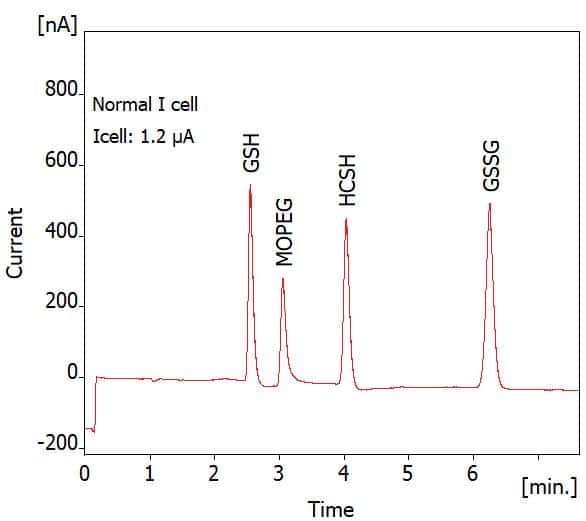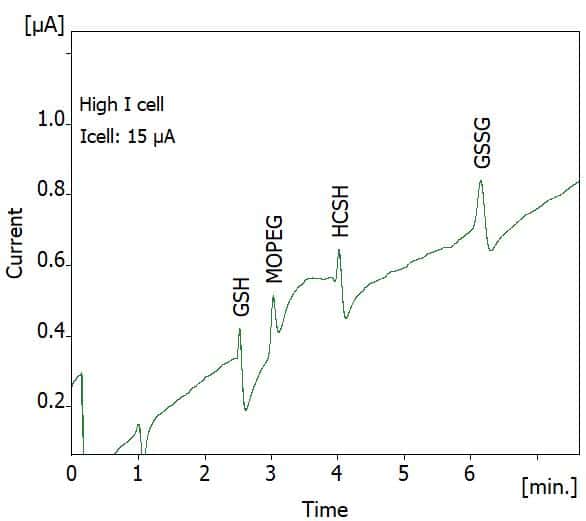Thiols, disulfides, bad peak shape, loss of signal on BDD diamond electrodes
Applies to
FlexCell with BDD working electrode, 211_005_02 – Aminothiols, Glutathione and Disulfides.
Summary
Bad peak shape, or loss of signal in Thiols analysis on a BDD electrode. The responsiveness of this electrode shows an optimum at a background current around 1 µA (at 1.8 V vs salt bridge). The background current has become higher than 5 µA and this coincides with peaks that are smaller than normal, chromatograms show a dipping baseline after each peak and the baseline shows more noise than normal. If background current is close to 0 µA, the peaks are just generally smaller without problems for the peak shape or noise.
Cause Background current is abnormal high or low. Possible cause:
- Salt bridge reference electrode is malfunctioning (air inside, clogged frit or crystals worn out) and it needs maintenance.
- Leakage under the spacer
- Alcohols and EDTA are electrochemically active under the conditions of the application.
- Short (inadvertent) application of a negative potential (smaller than -2V) increases the background current at a BDD electrode
- Too long application of 2.5 V on the electrode brings down the background current at a BDD electrode
Remedy
- Open, inspect, clean, reassemble and reinstall the flow cell. Polish the auxiliary block if necessary. Wipe the BDD electrode surface with a tissue with water and then with a tissue with acetone while mounted in the holder (prevent touching the BDD surface with the fingers after cleaning).
- For DECADE Elite users: apply 2.5 V for 1 hour while running the normal mobile phase. This may help lower the background current. Do not apply this step if the background current is too low to start with.
- Adapt the working potential up if the current is too low or down if the current is too high.
- Use a new BDD electrode.
- Make sure that there are no alcohols nor EDTA in the mobile phase, piston wash solution and needle wash solution. Replace the organic fraction by acetonitrile if necessary.

Fig. 1. Example of normal chromatogram from 10 µM standards mix, 2 µL injection. LC-EC conditions as mentioned in the application note.

Fig. 2. Example of problematic chromatogram at elevated background current from 10 µM standards mix, 2 µL injection. LC-EC conditions as mentioned in the application note.